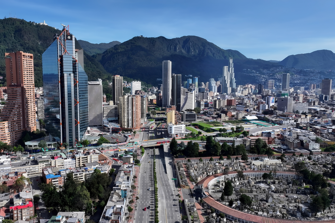#Corporate news
9M-2025: Coface records year-to-date net income of €176.3m
Coface records year-to-date net income of €176.3m, of which €52.1m in Q3-25; annualised ROATE at 12%.

Explore Coface's comprehensive Risk Dashboard, providing in-depth risk assessments for 160 countries and 13 industry sectors to make strategic decisions
#Corporate news
Coface records year-to-date net income of €176.3m, of which €52.1m in Q3-25; annualised ROATE at 12%.
#Corporate news
Coface releases its half-year financial results for 2025 with an annualised return on tangible equity at 12.6%.
#Corporate news
Coface publishes its Q1 2025 financial results, with a net income of €62.1m, for an RoATE of 12.7%. Turnover is €473m, up 2.0% at constant FX and perimeter.
#Economic publications
In the fast-paced world of global trade, optimizing trade finance is vital for asset managers aiming to maximize returns while mitigating credit risks. Effective tools and strategies can help streamline processes, manage liquidity, and protect investments. One indispensable solution in this context is trade credit insurance, which plays a pivotal role in securing receivables and reducing exposure to default risks. Below, we explore key tools every asset manager needs to optimize trade finance.
#Economic publications
Coface publishes its 2025 survey on corporate payment behavior in Latin America, conducted among more than 300 companies across Argentina, Brazil, Chile, Colombia, Ecuador and Peru. In a fragile economic environment, companies have extended their payment delays to support business activity, while the frequency of late payments has increased significantly.
#Economic publications
Wood has been added to the growing list of products subject to specific tariffs in the United States. These new measures could reshape sourcing strategies and pricing dynamics for importers and manufacturers. Find out what this could mean for your business.
With the rise of next-generation dashboards and connectivity solutions, commercial risk management is experiencing a paradigm shift: more intuitive, more responsive and more collaborative. From reporting to governance, discover how to harness the power of dashboards to steer your business with agility, performance and anticipation.
#Expert advice
Too often perceived as a conflictual approach or a simple cash flow operation, amicable Debt Collection actually plays an essential role in your client relationships. As long as you adopt an amicable, human and differentiated approach according to your partners' situation. Expert advice, testimonials and useful cases to help you collect your unpaid debts without jeopardising your business relationships.
#Expert advice
AI and data are powerful tools for improving business management, but their adoption remains a huge challenge for executives. Security, ROI, technological integration and digitalisation: our Risk & Smart Data experts help you transform your data into genuine growth drivers and decision-making solutions. Find out all the keys to managing your risks and stay ahead.
With the rise of next-generation dashboards and connectivity solutions, commercial risk management is experiencing a paradigm shift: more intuitive, more responsive and more collaborative. From reporting to governance, discover how to harness the power of dashboards to steer your business with agility, performance and anticipation.
#Our solutions
When agriculture faces the complexity of global trade: dive into the experience of one of the leading American agri-food cooperatives that is reinventing its trade risk management by combining Coface's comprehensive solutions in trade credit insurance and information services. As a result, commercial decisions are made in less than 15 minutes! Analysis of a winning strategy.
Managing bad debt is a challenge that every business faces. While maintaining a bad debt reserve is a common strategy, it might not provide the comprehensive protection your company needs in today’s unpredictable economic environment. A more proactive approach, such as leveraging trade credit insurance, can safeguard your business from financial instability and enhance your credit risk management strategy.
Navigate uncertainty with Coface's global risk assessments for 160 countries and 13 sectors.
Dive into the world of global trade with Coface's Trade Talk podcast. Explore captivating discussions with trade experts, explore market dynamics, and uncover strategies for growth.
Online services for customers and brokers
Business Information
Access the business insights you need to manage credit risks across your entire business-partner portfolio and make strategic decisions with confidence.
Customer Portal - CofaNet
Coface online platform for managing your trade receivables. Full monitoring of your risks. Direct access to all tools according to your contracts.
Broker Portal
Platform dedicated to brokers for monitoring your business and managing your customer portfolio (in all countries where legally available).
Innovative and digital solutions
API Portal
Stop juggling between software applications. Explore Coface API Catalogue and Integrated Solutions for Icon by Coface and trade credit insurance.






